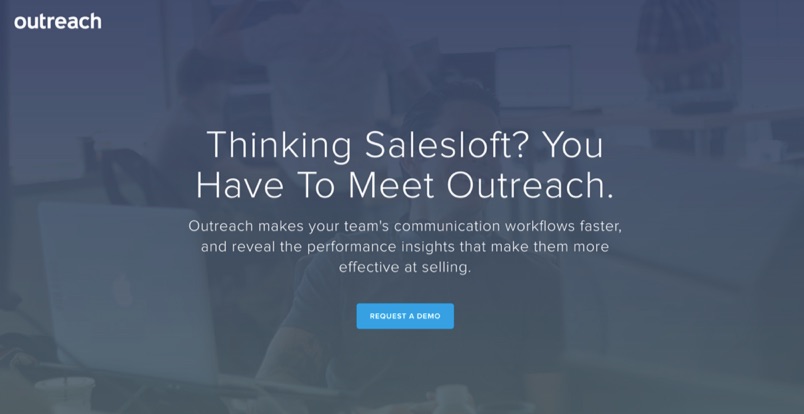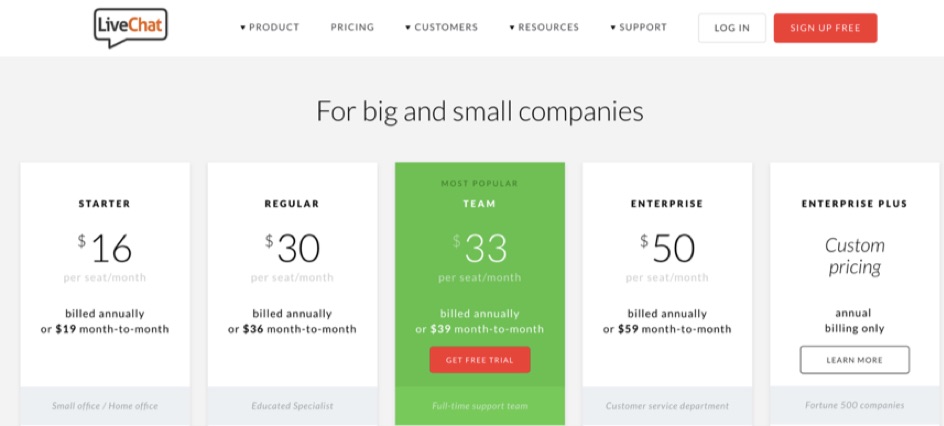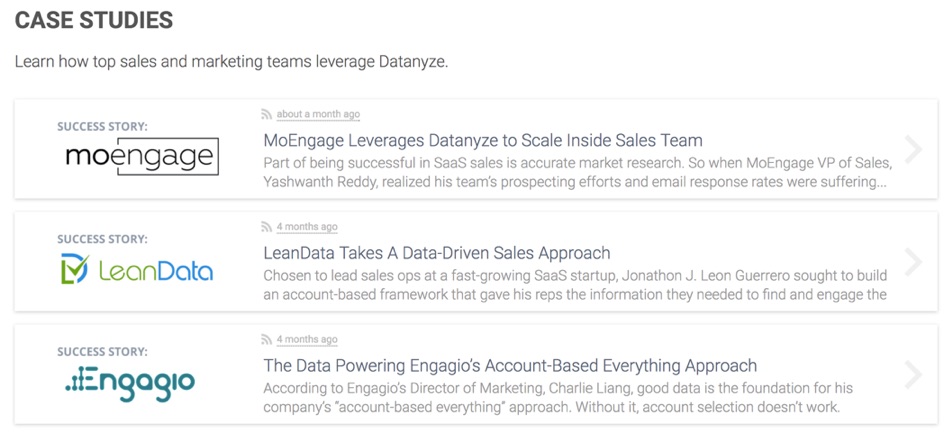Yes, maybe, or no.
For reluctant buyers, they aren’t quite certain whether your product works for them. The consumer isn’t sure if the product’s features will actually help them.
Tackling this segment of buyers is an issue facing most SaaS companies. The competition and the demand for the new best thing makes consumers apprehensive about purchasing.
“Ever since SaaS products emerged on the scene, they seem like they are constantly being replaced with something shinier and newer. Buyers hesitate to upgrade because they worry the new solution will be obsolete within a few years. Switching solutions is a significant hassle for many companies,” states Krishna Shastry, CEO and co-founder at Lander.
It’s time to give your audience that extra nudge to buy your SaaS product. Check out these five data-driven strategies below.
1. Customize the Product Demo Experience
Show, don’t tell is the underlying principle of engaging potential customers to learn more about your products. It’s not enough to just list your features and benefits on your website.
Purchasing a SaaS product is a big deal for most buyers. If they’re the end user, your product will solve their immediate needs, and if they’re purchasing software for their business, your product is supposed to help their company operate more efficiently.
To ease reluctant buyers worries, you need to give them an inside look of how your product moves them forward in their endeavors. You can start by asking them specific questions before the product demo.
How will they use your product? What do they hope to gain from the software? Who are the stakeholders involved in this purchase?
You also may want to analyze the most used featured by your top customers. That way, you can show reluctant buyers how others derive benefit from your product. It may offer clarity to the buyer’s particular situation.
One gripe amongst reluctant buyers is how they sign up for product demos. It’s important to dedicate a page for people to request demos. In the image below, sales engagement platform Outreach uses persuasive copy, along with a prominent call-to-action button to entice consumers.
Before your next product demo, ask buyers questions to customize the experience. A unique presentation will pique their interest and may lead to a new sale.
2. Segment Buyers to Email Exclusive Offers
As a consumer, you’ve probably asked for something extra with a purchase. Maybe it was extra pickles on your burger or an extra discount on a pair of designer jeans.
Well, while your SaaS product may be better than a gourmet sandwich, the same thought process about getting something extra may exist for your customers. Your buyers may expect a bonus to come along with your product no matter what.
However, exclusive offers aren’t created for every single buyer. You only want to deliver VIP treatment to a select group of reluctant buyers.
These individuals have expressed a strong interest in your product and just need one additional reason to say yes. It’s possible to tease these reluctant buyers with exclusive bonuses to get them to the shopping cart sooner.
Email is an effective tool for communicating this type of message. With built-in tracking capabilities, email service providers can tell you who opened your emails, what links they clicked on in a message, and the time they read the message.
And no more sending generic emails to your entire mailing list. Based on your buyer’s behaviors, you can use email segmentation to send tailored messages to different target audiences.
For instance, your data may reveal that reluctant buyers who participate in a product demo and request two content upgrades are more likely to buy with a bonus. Your team then can deliver a customized message with a bonus straight to their inboxes.
Let your consumers’ actions determine your bonus system. Then, you can execute your plan to capture those lingering sales.
3. Simplify the Checkout Experience
SaaS companies get so bogged down with improving their products that they forget to polish their websites. You’ve probably experienced a few buggy sites from your own experiences. If you get confused for longer than a minute, you quickly exit the brand’s website.
On top of that, consumers hate wasting time looking for your prices. And if your prices are too complicated to understand, they won’t continue with the process.
The reluctant buyer already has concerns; therefore, the checkout process shouldn’t scare them away. Below is an example of a pricing page from LiveChat. It’s easy to read and gives pertinent details about each plan to diminish uncertainty.
By observing your site behavior, you can identify the friction points causing buyers to bounce. Do they leave after viewing your pricing page? Or do they exit when it’s time to enter a credit card?
“Understanding [your customers’] big issues like discomfort with technology or over-reliance on legacy solutions is important, but it’s also important to understand the day-to-day barriers to a sale,” writes Ashley Minogue, marketing strategist at OpenView Venture Partners.
Your buyers are reluctant for a reason. Find out if the issue is your checkout experience.
4. Monitor Online Communities
Community engagement is a key part of selling in today’s economy. Consumers like talking about their experiences—bad and good—with their peers.
Online communities give customers the space to praise how they used a product and to offer advice on how the SaaS company can improve. There are also online groups dedicated to helping people learn the basics of a product.
For the reluctant buyers, these communities offer invaluable content. In their eyes, they get to hear the truth. And for proactive SaaS companies, it’s a chance to persuade potential buyers.
For example, with a Facebook group, your team can track post and comment activity to learn what customers enjoy about a feature or the different uses of how your product helps people. Plus, as the admin for an online community, you can guide the conversation of your consumers.
That social listening data prepares your team for sales objections from reluctant buyers. If someone hates that you offer no phone support, you can point to how current customers get more value from your email support.
You want to give reluctant buyers peace of mind. Show them a thriving online community that supports your product and brand.
5. Select the Best Customer Testimonials
Social proof is an irreplaceable asset for persuading SaaS users to purchase products. Influencers and peers can convince consumers to decide between competing brands.
So it’s natural for reluctant buyers to seek out customer testimonials before they make a purchasing decision. Radha Sarma, marketing director at Luit Infotech, offers her insight:
“Referral programs and customer stories are incredibly effective for selling SaaS software. Reluctant buyers are more likely to go straight to your existing customers and ask for their feedback or refer to testimonials and reviews on your website, because they rely on that a lot.”
To get the most from your customer stories, it’s best to analyze your data to find the testimonials with the highest traffic. You want to learn what makes consumers gravitate to one story more than another. Is it the particular customer? Were the results phenomenal?
From that information, you can produce similar case studies based on the reluctant buyer’s circumstances. You want to purchasers to imagine themselves as the next success story.
And of course, you want to continue to post these testimonials in easy-to-find areas on your site. Datanyze offers a quick format of their case studies for buyers to read.
What do reluctant buyers want to achieve? Aim to gather case studies displaying the many facets of your product solution.
Harnessing Data to Influence
Nurturing reluctant buyers requires strategic effort from your team. SaaS companies can use their data to influence consumers to purchase.
Your team can personalize the product demo experience for your audience. When necessary, simplify the checkout process by eliminating friction. And don’t forget to use customer testimonials that fit the potential consumer’s current situation.
Shake off your buyer’s hesitation. Let data influence your next sale.
About the Author: Shayla Price lives at the intersection of digital marketing, technology and social responsibility. Connect with her on Twitter @shaylaprice.



